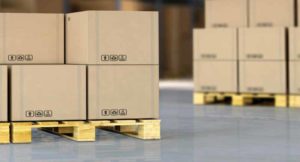SPONSORED BY McKesson
Servicing non-acute-care sites demands automation
 You just got the memo: Your IDN has acquired a nearby healthcare system with 50 non-acute care sites, mostly physician offices, with a few surgery centers and long term care facilities thrown in.
You just got the memo: Your IDN has acquired a nearby healthcare system with 50 non-acute care sites, mostly physician offices, with a few surgery centers and long term care facilities thrown in.
It’s great news for the board, administration and the population served by the growing healthcare system. But for supply chain executives? They may take a more tentative view. After all, most learned their craft in the acute care environment.
To them, the non-acute care world may look a little messy and inconsequential. After all, how many dollars are spent by physicians’ offices versus the acute care hospital? But healthcare is moving, inexorably, toward the continuum of care, and the supply chain leader of tomorrow will have to embrace it.
“Upon initial assessment of the non-acute supply chain and its strengths, weaknesses, and opportunities for improvement, I found that it was much less automated than the acute supply chain,” says Steve Piraino, director, corporate purchasing and supply chain management, Einstein Healthcare Network, Philadelphia, who came to the position in October 2009. “There was no EDI, no formulary, no usage of our GPO contracts, multiple distributors, and a lot of transaction discrepancies and re-work.”
John Frain, director and head of supply chain at Weill Cornell Medicine in New York, discovered much the same thing when he joined the IDN in March 2012.
“The non-acute care sites were using a number of medical/surgical distributors, including one known primarily for acute care distribution,” he says. “We had stockouts; technology was poor; the website was not user-friendly; and we were failing to leverage our spend and purchasing from one primary supplier.”
Fighting the battle…again
“As non-acute care settings come into the purview of supply chain executives, one of the key issues they face is balancing clinician satisfaction with the supply chain leader’s need for control,” says Jon Pildis, vice president, materials management, McKesson Medical-Surgical. Pildis leads a team of supply chain professionals who manage the flow of inventory from more than 2,600 supplier partners to McKesson’s Medical-Surgical’s network of distribution centers.
“Clinicians who have grown up in the non-acute care setting aren’t used to being told which gloves and gauze to use,” he says. “In the acute care setting, most IDNs have already fought that battle. But having to re-fight it with people who in some cases were entrepreneurs or practice owners is a big challenge.”
Supply chain executives face other dilemmas as they approach their newly acquired physician practices.
For example, there’s the difficulty of obtaining spend and performance analytics across the extended supply chain, says Pildis. It may be commonplace for IDNs to implement one information system across all their hospitals. But that’s usually not the case with scattered non-acute sites. “Really understanding your spend, your contract compliance, and how the supply chain contributes to patient care and quality, becomes very difficult as the supply chain extends all the way to patients’ homes.”
The supply chain executive may be surprised – or not – at the frequency with which the non-acute care sites order supplies, or the amount of inventory they stockpile, or their failure to rotate product. “These are the basics that most hospitals have already figured out,” says Pildis.
“The other thing to keep in mind is the limited resources you typically find in the traditional physician office,” he continues. “Office managers and nurses are involved in supply chain duties, but adhering to inventory best practices is not at the top of their list. They’re focused on patient care. They will often do what is the quickest and surest way never to run out of product. And that can lead to some behaviors that are vexing to supply chain executives.”
Technology lacking
 As director of corporate purchasing and supply chain management, Piraino reports to the vice president of finance, with responsibility for the procurement and contracting functions for the entire healthcare system, both acute and non-acute. He is responsible for Einstein’s GPO relationship, inbound and outbound freight/transportation, EDI design and implementation, and strategic design and implementation of the entire supply chain. At press time, the IDN had about 150 non-acute care sites, primarily physician offices.
As director of corporate purchasing and supply chain management, Piraino reports to the vice president of finance, with responsibility for the procurement and contracting functions for the entire healthcare system, both acute and non-acute. He is responsible for Einstein’s GPO relationship, inbound and outbound freight/transportation, EDI design and implementation, and strategic design and implementation of the entire supply chain. At press time, the IDN had about 150 non-acute care sites, primarily physician offices.
Upon arriving at Einstein, Piraino recognized that supply chain technology was sorely lacking among the non-acute care sites. Orders were faxed to suppliers. Sometimes staff picked up the phone and added items to those orders, without the purchasing department’s knowledge. Practices were supposed to fax packing slips to the hospital receiving department for data entry, but in the rush of their patient care duties, often failed to do so. Invoices would appear with no corresponding purchase order, so the supply chain staff had to do back-end, resource-intensive research to find out whose order it was.
The upshot?
“With decreased efficiencies come increased costs, and that takes away financial resources that could be used to provide better customer service for patients,” he says. “This is important, because Medicare and other payers are enforcing financial penalties on providers who are unable to meet patient satisfaction standards. Less time spent by a practice staff member on supply chain tasks means more time to interact with the patient.”
Piraino convened all the practice administrators and senior leadership to share his vision for the non-acute care supply chain, including his intent to implement sole source distribution.
“My fear was that there were literally 100 practice managers and ordering staff, all of whom had their own vendor and distributor relationships and product preferences, so I wondered if I’d get buy-in to my supply chain redesign,” he says.
He did, and he issued an RFP for medical/surgical distribution. McKesson Medical-Surgical was awarded the contract.
Automating the supply chain
 There were several reasons why McKesson won the bid, says Piraino. First, the company offered supply chain technologies, such as EDI, which would make the non-acute care supply chain far more efficient than the paper-based one preceding it. Second, McKesson Medical-Surgical offered the ability for Einstein’s non-acute care sites to access the IDN’s GPO contracts.
There were several reasons why McKesson won the bid, says Piraino. First, the company offered supply chain technologies, such as EDI, which would make the non-acute care supply chain far more efficient than the paper-based one preceding it. Second, McKesson Medical-Surgical offered the ability for Einstein’s non-acute care sites to access the IDN’s GPO contracts.
It turns out getting the practices to agree to standardize wasn’t that difficult after all. “We got aligned with our group purchasing agreements, and were able to leverage our non-acute medical/surgical buy with the hospital buy.”
The supply chain team created a master formulary and shopping guide on its Lawson Software system, so that the purchasers in the clinics could select their products onscreen rather than type out requests. “This saved at least one FTE in purchasing and one in accounts payable, plus part of a reconciler,” says Piraino. “We’ve since automated the release of purchase orders so that any item ordered from the formulary in our item master and on a valid contract in Lawson is automatically issued to McKesson Medical-Surgical every hour on the hour without human intervention by a purchasing agent. We’ve even created customized order templates for the practices so they only need to search in their specific list of items they use regularly.
“There are some significant advantages and efficiencies gained in using EDI,” says Piraino. “One transaction set in particular has a great impact upon workload within the practices – the 856 Advance Shipment Notice.
“With use of this transaction, we have all the receipts of supplies automatically received by the Lawson system, thus avoiding the need for practices to remember to save packing lists from shipments, and then to fax them to the hospital receiving department for manual entry into Lawson to complete the required three-way match with the purchase order and the invoice. We’ve trained the practices to simply notify corporate purchasing on an exception basis, that is, if there is a damaged shipment or short shipment or wrong item shipped. Corporate purchasing then handles the returns, credits or re-shipments.
“EDI also enhances communication and visibility of the status of orders for the practices, so they don’t need to guess where their goods are or when they are expected to arrive,” he continues. “McKesson Medical-Surgical sends the 855 Purchase Order Acknowledgement typically within an hour of placing the order. We have written some custom programming in Lawson to pass the confirmation status to the requester who entered the order, so they are very quickly aware of any backorder situations or other issues, and can work with corporate purchasing on expediting or alternatives/substitutes.
Logistics expertise
 John Frain arrived at Weill Cornell Medicine to lead the procurement department in supporting all education, clinical, medical and research departments. (Acute care purchasing and materials is handled by Weill Cornell’s partner, New York-Presbyterian Hospital.)
John Frain arrived at Weill Cornell Medicine to lead the procurement department in supporting all education, clinical, medical and research departments. (Acute care purchasing and materials is handled by Weill Cornell’s partner, New York-Presbyterian Hospital.)
He brought with him extensive experience in logistics and operations, having been worldwide supply manager for supply chain operations for IBM, and senior logistics manager for Purolator. He worked for Merisel Inc. prior to becoming director of operations for Long Island University. He joined Weill Cornell Medicine in 2012.
Despite his past logistics experience, the job facing him – servicing Weill Cornell’s approximately 100 non-acute care sites — was daunting.
For example, not all the non-acute care sites’ suppliers had been integrated with Weill Cornell’s SciQuest system; that meant that office staff had to communicate with them via phone or e-mail. “That’s not efficient from the standpoint of the number of steps needed to fulfill an order and pay for a product,” says Frain. He knew it was essential to select a primary medical/surgical distributor with world-class technology and logistics experience, next-day delivery, a broad product offering and good pricing.
The IDN had attempted to do this in the past, but was unable to do so. “But we said, we’re going to manage the risk by going through each step of the award process methodically.” Working with a group from the non-acute care sites, the supply chain sought a world-class supplier, and found it in McKesson Medical-Surgical, with whom they signed an agreement in September 2014.
A big reason was McKesson’s technology. “McKesson SupplyManagerSM allows us to gather custom reporting, including materials usage, by site and by vendor, and that’s a great asset to our practices, so they can manage their operations better; and for supply chain, so we can centrally manage and have visibility into what the practices are buying and from whom,” says Frain.
The IDN awarded a similar prime vendor office supply contract to WB Mason.
A McKesson team was onsite to introduce the company, its people and its products to the IDN staff, says Frain. “They were great.
“Then we started to track compliance and the use of McKesson versus the other suppliers who were still on our purchasing site via SciQuest. We didn’t go cold turkey by pulling off SciQuest all the other vendors, but we eventually did take them off. And if a practice needed some education on the system, McKesson would visit the site.”
Today, the sites log onto the purchasing system and place their orders on SciQuest. McKesson usually receives it within an hour, processes it and packs it on the truck for next-day delivery. Billing is electronic.
Standardization across the non-acute care sites is a work in progress, says Frain. “As you acquire practices, physicians have different needs and experiences of what they want to use. It’s not easy to tell them to change [products]; they are the experts in their field. But we are working with the physician organization executives on it, and there is definitely more room to continue to standardize.
“Given my experience at IBM, we try to give the end user some choice, by using the power of procurement to lower the cost [of products] from each of the vendors. So, if we can’t get everyone to standardize on one vendor, we offer them two,” and the prices are similar. “It takes more work, because no one vendor gets all the spend. But it shows the professionals that you’re thinking of them. It’s a way to get them onboard.”
And McKesson has proved to be of help. “The McKesson rep was great in helping achieve cost-savings for an equal or better product, without experiencing the negative effects of poor quality,” says Frain.
Changing needs
 Nothing stands still. Non-acute care supply chain programs are no exception.
Nothing stands still. Non-acute care supply chain programs are no exception.
“We have moved on to enhance what we have with McKesson for medical/surgical supplies,” says Piraino. For example, the practices use a fairly significant amount of pharmaceuticals, mostly over-the-counter drugs, he points out. “The hospital pharmacies used to supply these in the past, but with regulatory and class-of-trade issues, that practice stopped several years ago. We needed to develop a drug formulary. That took a bit of a different skill set from my team and negotiation with a lot of new suppliers to determine the best contract for each of the drugs. Those now are part of the formulary and are ordered exactly the same as the medical/surgical supplies.” Einstein is working with McKesson on a similar program for vaccines.
Piraino and his team are also working on standardizing all purchased services across the non-acute network, including waste management, document shredding, answering services, linen services, copiers/print management, medical records scanning, and more.
“McKesson has really helped us in that area as well, with their assistance in outfitting these new offices with exam room furniture and diagnostic equipment. They pre-stage all of this equipment in their distribution center and deliver it when the construction/renovation team desires.
“McKesson knows all our equipment and furnishings, our contracted vendors and our standardized products, so they greatly assist in meeting with practice managers on the front end and showing them catalogs and options. In essence, they are an extension of the purchasing department, acting as equipment planners.
“I would recommend regular business reviews and strategy sessions with your distributor to determine if there are other areas where efficiencies can be gained or dollars saved or revenue enhanced,” continues Piraino. “Many health systems have strategies to grow their non-acute networks substantially in response to the Affordable Care Act and accountable-care-organization models. Einstein has such a strategy and we are regularly acquiring or building new sites.”
World-class partner needed
“We partner with world-class suppliers, with world-class technology, who have a local presence with their distribution center,” says Frain. McKesson Medical-Surgical is one such supplier, he says.
“You need suppliers who provide the best technology, to make sure you always have supply. This way, the practice managers can focus on their businesses, making sure they take care of their patients and stay profitable, rather than searching for suppliers or best prices.”
Piraino believes supply chain leaders will, of necessity, become experts in the non-acute care sector.
“Supply chain executives need to alter their organizations and distribution systems and partners to get beyond the hospital-centric approach. They need to become patient-centric. They need to make sure they have the assets – either their own or those of their partners – to reach into the physician office, the surgery center. And they need the data and a reliable supply chain to ensure high patient outcomes.
“We see this moving very fast.”
What the non-acute distributor can bring
As vice president of materials management at McKesson Medical-Surgical, Jon Pildis brings plenty of perspective to non-acute care supply chain management. Pildis leads a team of supply chain professional who manage the flow of inventory from more than 2,600 supplier partners to McKesson’s network of distribution centers.
The Journal of Healthcare Contracting asked Pildis how supply chain leaders can best service their newly acquired non-acute care sites.
Journal of Healthcare Contracting: When speaking with the vice president of supply chain who has gained new non-acute care responsibilities, what do you recommend should his or her No. 1 priority? Any thoughts about priorities 2, 3 and 4?
Pildis: The first, second and third priorities are to measure, measure, measure. Supply chain leaders need to measure spend and operational activity from their full roster of distributors and manufacturers servicing the non-acute business. They should also develop qualitative measurements of how the clinicians currently experience the supply chain. Do they encounter frequent backorders? How responsive is the supply chain staff? What about emergency deliveries?
JHC: What’s next?
Pildis: Look for the “quick hits” of contract compliance and try to reduce spend without forcing radical changes to product selection. Are the sites adhering to GPO contracts? Are the distribution partners helping?
The supply chain team also needs to figure out where they are on the continuum of insourcing and outsourcing, and the distributor can help. Some of our IDN customers have decided that distribution is a core competency of theirs, so they build out a distribution network. We will work with them on that. Other organizations say, “We don’t want anything to do with it; we want partners who can handle our entire supply chain.”
JHC: What technologies can a distributor offer to help the supply chain leader with his or her non-acute care supply chain responsibilities?
Pildis: It actually starts with the supply chain leadership giving their distributor “marching orders” in terms of how much flexibility the supply chain executive wants to offer their non-acute sites with respect to formularies and the purchase-to-pay process. These are “rules of engagement” for the non-acute care settings.
Then we at McKesson Medical-Surgical, set out to determine what technologies can best meet those rules of engagement. This can range anywhere from building a web-based ordering system, to helping the non-acute sites reorganize their supply closets and labeling shelves so they can set up rudimentary min/max levels for commonly used items. Within the boundaries of the organization’s plan, we want to make medical supply ordering the easiest part of the staff’s day.
JHC: Do you see any common misconceptions among supply chain leaders about the non-acute care distributor?
Pildis: I wouldn’t say it’s a misconception so much as a failure to understand that non-acute care distributors have built specific competencies in dealing with the complexity of the non-acute environment. For example, we deliver in lower units of measure than are often found in acute care settings. Furthermore, physicians’ offices are often low-technology environments, possibly with only a single PC — no scanners or Internet-enabled cabinets; we have developed a suite of technology solutions to help maintain inventory control nevertheless. And finally, the delivery and reverse logistics processes are much more difficult in the non-acute care setting. That’s one reason we have invested in more than 900 McKesson uniformed delivery professionals.
The non-acute care distributor is able to respond quickly to their customers, knowing clinicians don’t have a lot of access to products. They can’t go to a different department, as they can in a hospital to get an extra case of gloves. They need help weighing new regulations, and they need processes which support that.
And don’t forget the importance of people – account managers, customer service agents, delivery professionals, salespeople. We can make all of them available to the non-acute setting to help the busy clinician figure out a supply chain issue — a recall, returning a product, finding a new product for a specific patient. We’re not just a website or distribution center; there are thousands of people at McKesson who regularly interact with non-acute care clinicians and office staff, helping them through the complexity of the supply chain.
That’s at the heart of the value proposition for the non-acute care distributor. It is not a high volume cookie cutter production line; it’s dealing with people who may only have 10 minutes a week to order supplies, and who have turnover, and new offices and new buildings. It’s such a dynamic environment, you need to be ready to train and support the next person on the ordering tools or returns process.
That’s everyday life for us.

Ashley – Thanks for the kind words! The non-acute-care setting is quite unique and it’s an honor to help healthcare practitioners get their jobs done. Again, thanks for the comment.